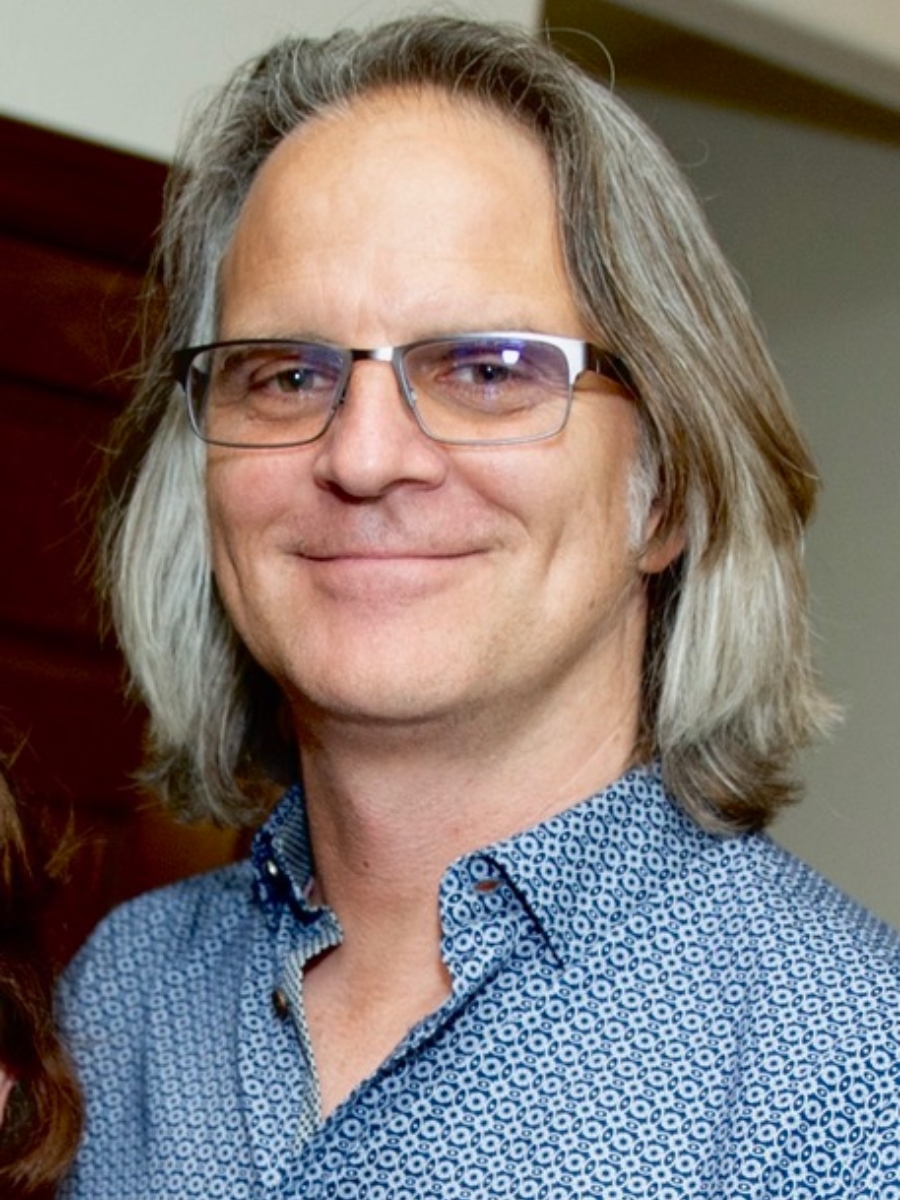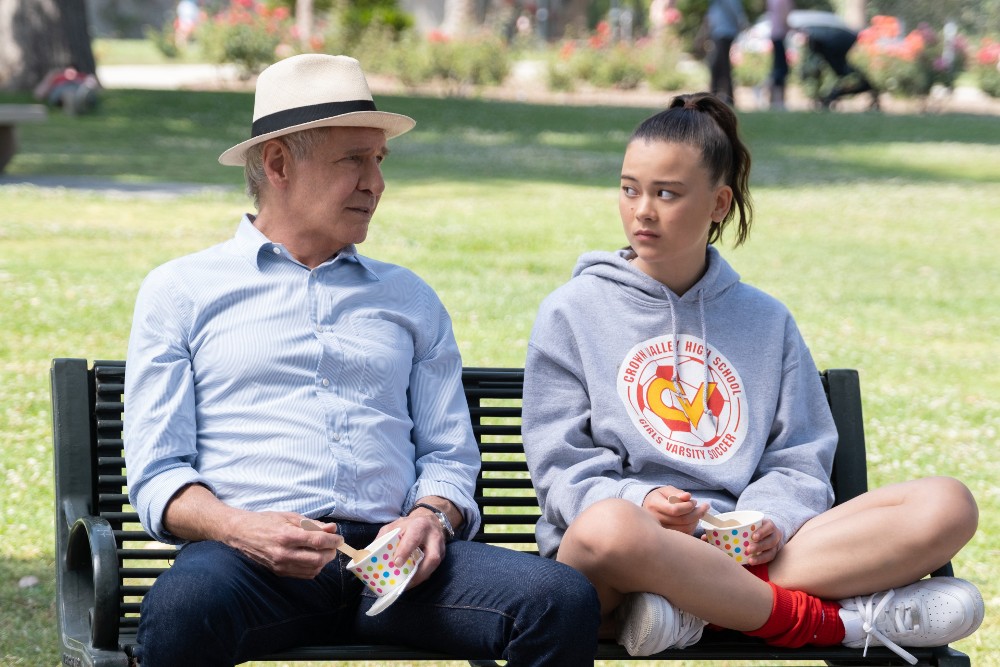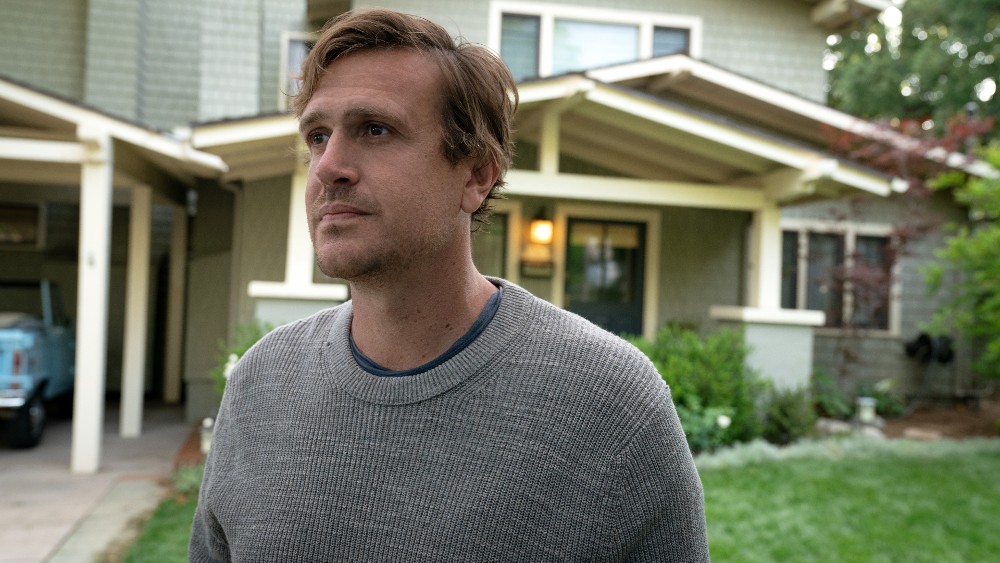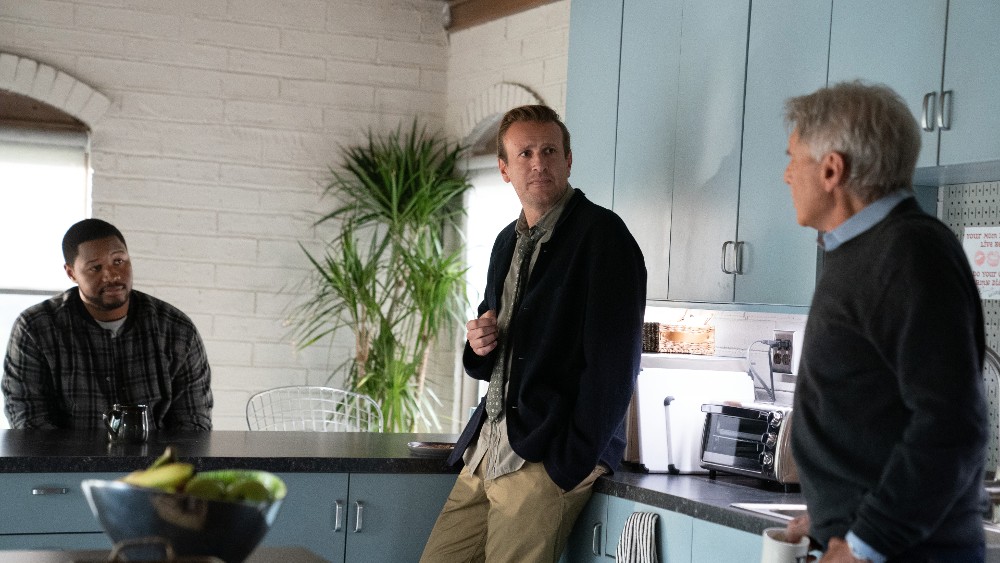Jim Frohna didn’t set out to become a cinematographer, making his way to the profession slowly but steadily, but once he got a taste for the action, he couldn’t get enough of it. Though his career took the scenic route, it ultimately led him to shoot Apple’s latest hit comedy series Shrinking, which stars Jason Segel and Harrison Ford.
The series was created by Ted Lasso duo Bill Lawrence and Brett Goldstein, as well as Segel, who plays Jimmy Laird, a therapist grieving the tragic death of his wife with the help of his friend and fellow therapist Gaby (Jessica Williams). Jimmy is in a vulnerable place when we first meet him, and because of that, he opens himself up to new, unorthodox methods of treatment, including offering his guest house to one young patient, Sean (Luke Tennie).
Jimmy’s supervisor, Paul (Ford), isn’t on board with his ethically dubious methods, but he’s dealing with a recent Parkinson’s diagnosis and how to break the news to his estranged daughter. The series isn’t exclusively a workplace comedy, however, as the cameras bring us into Jimmy’s home, where we see the effect his grief has on his teenage daughter, Alice (Lukita Maxwell).
Because of Ted Lasso and its uniquely satisfying mix of comedy and drama, Frohna knew he wanted to work on Shrinking before even seeing a script. He recently spoke with Below the Line and discussed his early Zoom meetings with the show’s producers and explained why he chose the camera and lenses that he did. Frohna also talked about some of the challenges that came with the series, though lighting a legend like Ford wasn’t one of them.

Below the Line: How did you get the call to work on Shrinking?
Jim Frohna: When I first got word that this project was happening, I loved Ted Lasso so much that even before I saw a script or anything like that, I said to my agent, ‘please do whatever you can to get me a meeting because I have a feeling if it’s anything like Ted Lasso, it’s gonna be fantastic.’
I ended up getting the Zoom meeting. They sent me the pilot script and sure enough, reading it, it was clear it was going to be very different than Ted Lasso, but also similar in that you’re gonna laugh, you’re gonna have a lot of other feelings, and you might tear up. It’s just going to kind of ride this wave of human experience.
One thing that I said to the producers when I was on that first Zoom call — this was totally sincere — was that during the pandemic, Ted Lasso saved me and my family. It wasn’t just a good show — it was so full of humanity, compassion, joy, and everything. Basically, that was the launching point for me to say, ‘I got the same feeling’ from reading the pilot script. [I] just really wanted to be involved in a show that was not afraid to go to these kinds of more painful places and at the same time, allow us to laugh a moment later — that kind of thing. I was very fortunate to get the gig.
BTL: It’s already one of my favorite new series of the year.
Frohna: That’s cool. Yeah, it’s definitely resonating with a lot of people. I’ve heard from more people [about Shrinking], I think, than any other show I’ve worked on — getting texts from old friends, or my mom will say, ‘oh, some women were talking about the show at church,’ and that kind of [stuff]. It’s cool that it’s really been reaching a lot of people.
BTL: It’s funny… I went into this year thinking that the stronger Harrison Ford performance was going to be in 1923 and after watching both shows, I’m like, no, Shrinking is the show Harrison Ford deserves an Emmy for.
Frohna: Yeah, I have not watched 1923, but that’s nice to hear. [With] Harrison Ford, I think it’s clear from his other performances that he has a dry sense of humor. He has [a good sense of] humor but [Shrinking is] just more of an opportunity to see this wonderful aspect of Harrison Ford.

BTL: Is there a secret to lighting him on set?
Frohna: To lighting him? There’s not a secret. The thing that I tried to do on this show [was] have it feel very naturalistic and very grounded in a real place. That translates to, alright, well, here’s where the windows are, this is where the sunlight would be coming in, or if it’s a cloudy day, the soft ambient light, and then just responding to what’s happening in the scene to determine the exact quality of the light, but basically keeping it very grounded in a natural way. [There wasn’t any] particular secret for any one character. We did some specific things for Jimmy coming out of living in the shadows in the earlier episodes, but [we did] not do anything special for Harrison.
BTL: What was the decision process that went into choosing the camera and lens for this series?
Frohna: Here’s how I described the show in terms of where it begins and where it goes — I don’t know why this phrase popped into my head when I was first talking to James Ponsoldt, the director of the pilot, but the phrase was rumpled [yet] hopeful. Another way to put that is — because that doesn’t exactly translate into why I chose these lenses — we use these older lenses called BALTARs and they have great characteristics and there are some subtle, nuanced, I would say, flaws to them. They’re not perfect, the image is not perfect and to me, that was what Jimmy’s life was [like], right? Or all of our lives, for that matter.
It still had this kind of vibrancy to it and it was just nice to be able to find a lens that… it’s interesting because I don’t really think in terms of technical terms, but part of what I responded to with these lenses — because I did a test and tried six or seven different lens families — [was that] these felt like there was a [sense of] compassion to them. How a lens has compassion, I don’t know, but that’s what I felt when we put these lenses on the camera.
As far as the camera, I pretty much always use Alexa. In this case, that’s what we used, the Alexa Mini LF, and [we] just landed on these lenses [largely due to] the humanity of the lenses.
BTL: Do you have a preferred camera and lens or does it vary by what works best for the project?
Frohna: Well, as I mentioned, I’ve always loved the Alexa and they’ve had variations on that camera. There was a Mini and then there’s a Mini LF, which has a larger sensor, which just means you can — we could get into the technical stuff of that, but basically, it [offers] options within the Alexa family. As far as lenses [go], it always depends on the project. That’s part of the fun of modern cinematography — there are so many options. People have brought older lenses back to life, rehoused them, and made them compatible with today’s cameras and all that. There are many paintbrushes that you can choose as you proceed these days.

BTL: There were four different directors who worked on Shrinking. What was the collaboration process like with them?
Frohna: The way that shows work, whoever is doing the pilot is carrying the weight of figuring out the tone [and] bringing the world to life, and then the other directors follow suit. Much of the creative conversation happened with James Ponsoldt, and it’s an exciting time because you’re all discovering it together. Of course, there’s the day that filming begins when it’s like, “oh, now the characters are alive. It’s not just an idea. Here they are.” I love that part of the process. It’s always a little nerve-wracking because you’re like, “how is this going to work? Is it going to be good? Have we made the right choices?” And then filming begins and the actors bring so much to it.
As far as the other directors, I had a great time working with Ry [Russo-Young], Randall [Keenan Winston], and Zach [Braff]. Randall is one of the producers, so he was around a bunch. I already had a connection and rapport with him. At this point, having done a lot of TV, I’m used to how that process goes. It’s almost like speed dating a little bit because you’re so connected with this person, you’re completely dialed in, and you’re working so intensely on this episode, and then Friday comes and they’re done, and now the next person is there.
[And then] it’s like, “Okay, now I have to figure out how to relate to this person or what their communication style is.” I actually quite enjoy that. It keeps me kind of nimble and agile. It’s just a matter of being open to how this person now communicates to you and what their ideas are. I had fun with all the directors and they all did a very fine job of getting the tone [and] the characters, and everything.
BTL: Was there a set or location that you found challenging from a cinematography perspective?
Frohna: One of the fun things about the show — we had sets, and we shot a good deal of the show on our stages, [and] our sets. We also got to take advantage of Pasadena and celebrate the unique aspects of Pasadena as a part of Los Angeles, but one that maybe isn’t [the] typical Los Angeles. It’s smaller things, like the building that the therapists all work in is a real building, and we recreated a version of it on stage. It’s this beautiful mid-century building.
There’s a scene in the pilot when Sean [Luke Tennie], the patient, almost gets into trouble with a guy outside of a burger place. That’s classic California… that place has been on that corner for 65 to 75 years and it’s just a greasy spoon burger joint. Getting to kind of capture that as part of the world of the show — those places were a lot of fun.
Much of the show is on [a] stage — much of the show is in the therapy office, and a lot of scenes are in the employee break room. I would say, in terms of challenges, because of the way I’m lighting very naturalistically — we know the sun comes up over here and goes down over here, that we’ve set a rule for ourselves. “Is it a cloudy day? Is it the bright sun pouring in?”
I would say the biggest challenge was just how to keep some visual interest in a room that we go back to many, many times. It’s not a huge challenge but it’s one of those things where it’s like, “Okay, we’re back/ Paul’s sitting at the table. Jimmy’s over by the counter. What can we do that we haven’t quite done, [but] in a subtle way?” Because, again, I’m following the rule of, “this is still real life, [so] we’re basing this all on our pretend sun.”

BTL: How did you first get an interest in becoming a cinematographer?
Frohna: I came up through lighting. The more typical path is that a cinematographer will come up through the camera department, although a good amount of DPs have come through lighting and that was my path. It’s interesting because I didn’t start out saying, “oh, I want to be a DP.” I was doing a lot of writing and screenwriting out of film school and all that kind of [stuff].
A friend of mine was on a lighting crew and hired me. I started doing it and really liked it. I loved it, actually, and very quickly, moved up the ranks and became a gaffer. And then at a certain point, there were some DPs I was working with as a gaffer who would say, ‘Oh, we have an additional camera, can you…?” This was in the commercial world, and sometimes music videos. They would say, ‘We want to add a camera. Will you do that, Jim?’ To my delight, I loved doing it. I was like, ‘Oh, this is fun,’ looking through the camera [and] getting to be a much more creative collaborator.
Basically, the short version of the story is that I got very lucky. There was a situation where a DP I was working with had to leave a job and they all looked at me and I said, ‘I can do it.’ I stepped up [at the] last minute to shoot this thing. It was a big — there were eight cameras and 23 crew members and basically, I said to myself, ‘I’m enjoying this even though I’m scared out of my wits, but if I can handle this, maybe it’s time — maybe I’m ready to start going for being a DP.’ That began my push to find my way into a career as a cinematographer.
BTL: Since you worked on Transparent, I would be remiss if I didn’t bring up the fact that without the education and awareness that came as a result of the series, I might still be in the closet right now.
Frohna: Wow. I’m glad that the show had that [kind of] impact for you. That show was so special to me and still ranks as the most meaningful [and] the most [creatively] satisfying, but also personally and emotionally, and as a human being, that was [just] an amazing experience and an amazing show.
Season 1 of Shrinking is now streaming on Apple TV+. The show has already been renewed for Season 2.





